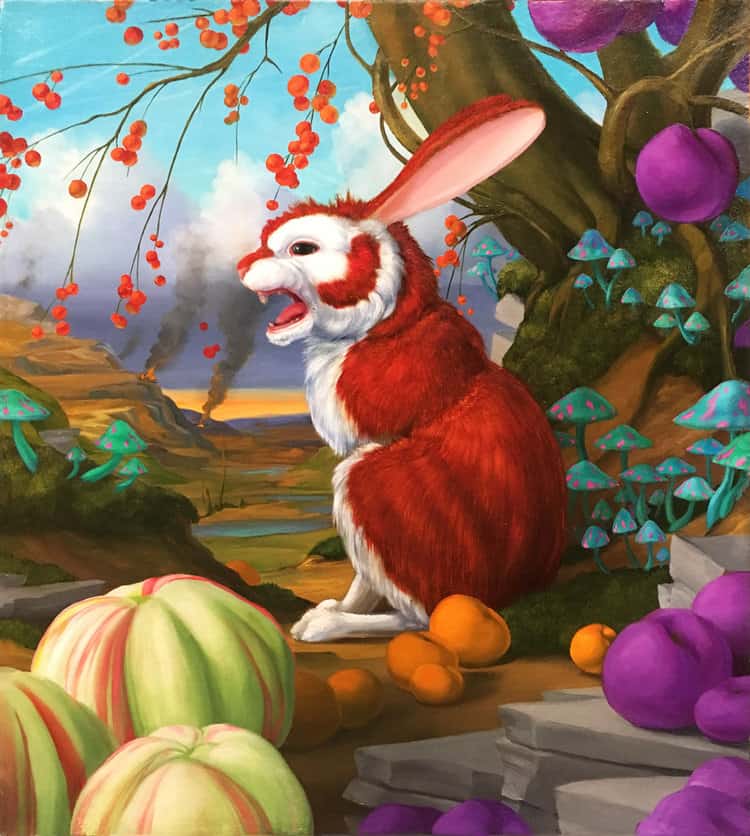
“Portrait of a Startled Rabbit Near a Culvert,” 2016, Laurie Hogin, oil on Canvas, 201⁄2″ x 18″ Photo: courtesy of Tory Folliard Gallery
Laurie Hogin’s mutated menageries are simultaneously extremely beautiful and intensely horrific. A bit more the former than the latter, though; this is all as if you took Edward Hicks’ The Peaceable Kingdom (1826) and added to it about 100 years of pesticides, radiation, inbreeding and ecosystem destruction—Hell never looked so gorgeous. Where Hicks posited an animal world at peace with humankind, Hogin sees everywhere a comely corruption, an animal kingdom so giddy in its savagery and evil that only the trappings of an overcharged and hothouse beauty could describe it. Hogin’s animals are so flat-out convincingly evil in their appearance that they almost look human.
Superb realist skills are an important element in this, in her way Hogin is a moralist in a world gone mad, a Cassandra to a world so seduced and distracted by beauty that specificity of representation is crucial. A purposeful nod to art history too is a standard device in her work, a painting such as Portrait of a Startled Rabbit Near a Culvert (2016) is a riff on 18th-century British Portraiture with the complacent country squire as the confident ruler of his rustic domain. That is, if the squire was a crazed rabbit standing amidst overly genetically modified fruits and vegetables. There are more rabbits than any other species on view here, though there are plenty of lizards, peacocks, monkeys, other birds, etc.—which are all overbred and manic as well. But rabbits, whom we usually culturally identify as relatively benign and peaceful creatures with an amiable sensuality and an inherent cuteness in Hogin’s hands become vehicles of deceit, cunning and aggression—more predatory than precious.
Hogin often includes a largish multi-figure composition or two in her exhibitions, and here it’s Swamp (2016). A group of bright orange alligators, including their innumerable progeny, come to sun themselves on the rocks, which are shown as architectural elements left by humankind from some distant past, man-made stone steps now overgrown with tree roots. Amidst the mushrooms, gourds and oranges profusely growing around the swamp there’s also a manic bunny, some bright green parrots and a mutated squirrel, and while no violence seems imminent, there’s an underlying sense of dread here. In the background are traces of some eruptive activity, as if this is some post-apocalyptic spot, inhabited by the altered survivors we have left behind.
—JAMES YOOD